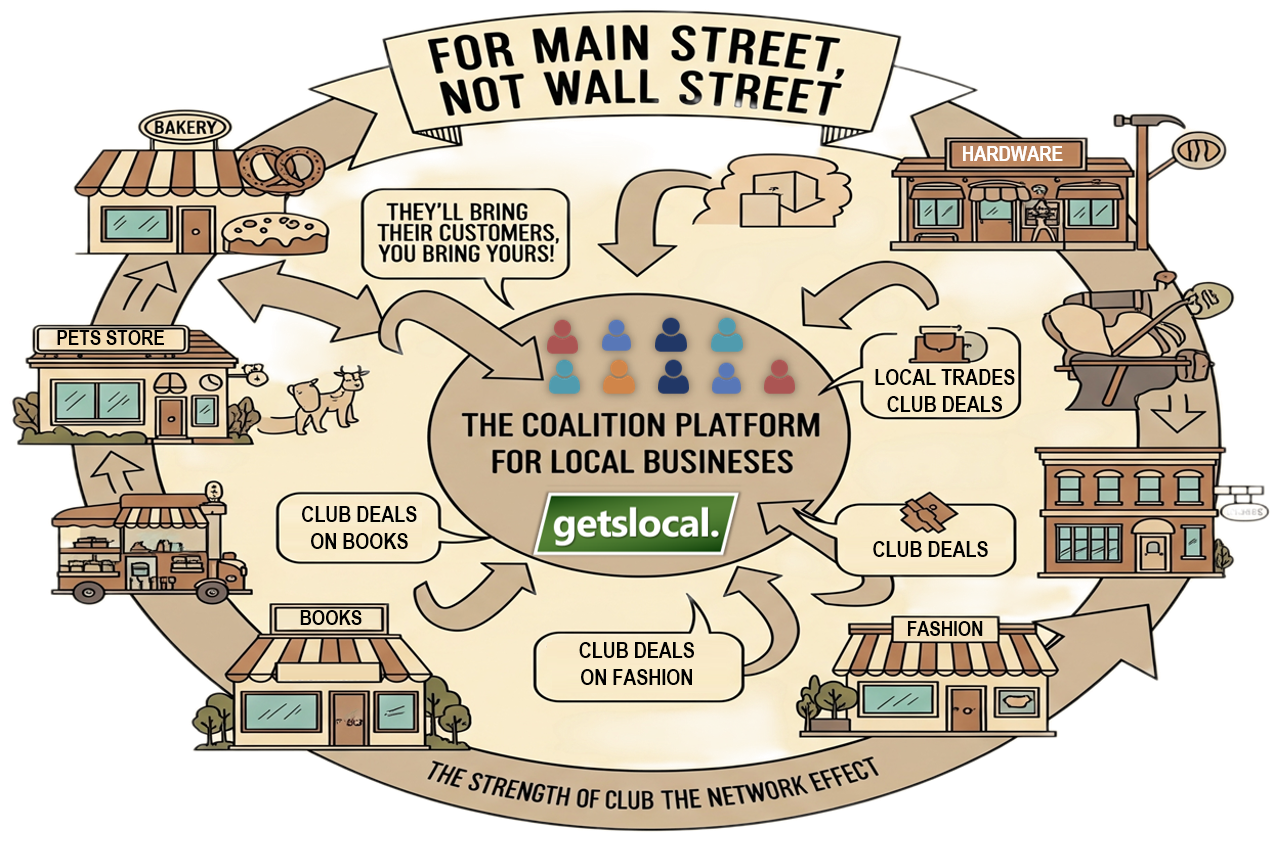Introduction: The Endless Struggle for Customer Loyalty (And What To Do About It)
As a local business owner, you know the daily grind: the constant, difficult challenge of attracting new customers and inspiring the kind of loyalty that keeps them coming back. You invest in rewards programs, hoping to build a dedicated customer base, but often the results are underwhelming, leading to stagnant growth.
But what if that conventional wisdom is wrong?
What if the loyalty tools used by 99% of businesses are not just ineffective, but are actively designed to limit your growth?
It’s time to rethink the entire approach, moving beyond isolation to find a smarter way to grow.
1. You're Told to Go It Alone, But Standalone Programs Are Designed to Fail.
The conventional loyalty program operates on what’s known as the "Standalone Model." This model, representing an estimated 99% of all rewards programs, puts the entire burden of finding and retaining customers solely on you.
Its core limitations are built into its design. This "isolated approach" means your business is "Walled Off" from others, operating in parallel but never collaboratively.
This creates three critical problems:
- Limited Reach: Your marketing efforts can only ever reach your existing customers, making it incredibly difficult to attract new faces.
- Stagnant Growth: You are left trying to grow from the same, restricted customer pool, which inevitably leads to a plateau.
- Limited Reward Scope: Customers can only earn and redeem rewards within your single business, reducing the program's overall appeal.
For an independent business, this isolated burden is an unseen force working against you. You're expected to build an empire from a small island, without realizing that your marketing signals can't even reach the bustling mainland right next door. This isn't just a strategic disadvantage; it's a constant drain on your resources and a ceiling on your potential.
2. The Secret Isn't Competing—It's Collaborating.
The counter-intuitive solution to the standalone struggle is the "Coalition Model." Instead of building higher walls, this model tears them down by uniting hundreds of independent businesses and their thousands of loyal customers into a single, large marketplace.
This creates a "Community Powered" ecosystem where every business helps the others succeed. The focus fundamentally shifts from isolation to collaboration.
Where you get access to their customers, they get access to yours. It's the ultimate win-win.
Strategically, this pools collective marketing strength, allowing independent shops to achieve a market presence and customer reach previously reserved only for large, national chains. It’s the ultimate way to level the playing field on Main Street.
3. Your Next Customer is Already Loyal... to Your Neighbor.
In a coalition, your next customer isn't a stranger you need to win over from scratch; they are often right next door, already loyal to another local business in the network. The key is "Automatic Discovery."
Here’s how it works:
A loyal customer of the local cafe can discover your business through a Club Deal, driving immediate foot traffic. They were already out supporting a local business, and the network simply guided them to another one—yours.
This is the "network effect" in action. It transforms the abstract idea of a coalition into a tangible result: a new customer walking through your door that you would have never reached on your own. This is the direct antidote to the "Limited Reach" and "Stagnant Growth" of the standalone model, actively turning a competitor's customer into your own and answering the question of where tomorrow's foot traffic will come from.
4. You Think It's an Expense, But It's Actually a Growth Investment.
A common concern for any business owner is that a rewards program is just another line-item expense. However, a well-designed program should be a smart investment, not a cost. The goal is to drive "incremental business"—encouraging purchases that might not have otherwise happened—to ensure the value you gain in sales and loyalty significantly outweighs the cost.
This isn't just a theoretical promise; it's a measurable outcome experienced by businesses who make the shift. As one pizzeria owner discovered, the program excelled at both bringing in a ton of great new customers and rewarding recent visitors to come back more often:
"Joining the program was one of the best decisions I’ve made! Club Rewards has been perfect for bringing in a ton of great new customers and rewarding recent visitors to come back more often. It's been a simple, effective way for us to connect with our community and help our business grow." — Jonathan Greschler, Protos Pizza Denver
When your loyalty program is designed for positive ROI, it stops being a source of financial anxiety and becomes a predictable engine for growth.
5. You Believe Powerful Tech Has to Be Complicated. It Doesn't.
For a busy business owner, the thought of implementing new technology can be daunting. The fear of complex integrations, steep learning curves, and time-consuming management is real. But powerful technology doesn't have to be complicated.
No Tech Required
The best platforms are built on a philosophy of "Simple Tools. Powerful Results." This means you can create compelling offers in minutes or access your loyalty analytics from any device, anywhere, without needing a technical background. Club Rewards works independently of your current POS system. There's no complicated hardware or software to install. The goal is to give you powerful capabilities without consuming your valuable time.
Our platform is intuitive, so you can focus on what you do best—running your business.
Accessible technology is a great equalizer, empowering independent businesses with powerful tools while saving them their most valuable asset: time.
Conclusion: Are You Ready to Stop Going It Alone?
The path to sustainable growth and true customer loyalty isn't about working harder in isolation. It’s about working smarter, together. The fundamental shift is moving from a "walled off" strategy where you carry the entire burden to a collaborative, community-powered model where your success is amplified by those around you.
The insights are clear, leaving just one question: What could your business achieve if the entire community was helping it grow?


